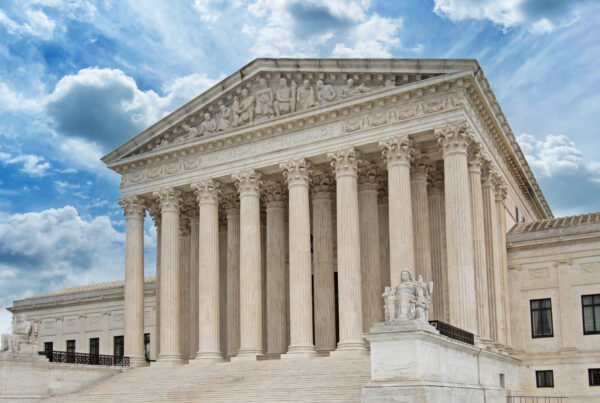Summer 2019 CPA Newsletter
Volume 35 Issue 3
By Michael Mezzo, CPA, MBA, Manager
Over the past few years, it seems that you could not have a conversation about snow without the words overage, deficit, or special assessment being a part of the conversation. But not this year! Mother nature was kind enough to spare New Jersey from multiple major snowfall events over the 2018 / 2019 winter months. Despite the milder winter experienced over the past year, many Associations had still included a very conservative line item for snow within their annual budgets due to the repeated years of unusually high snowfall in past years. This rare curveball is posing a problem for some Associations who are asking “What should I do with my unused snow funds?”. Rest assured, this is a good problem to have. Within this article, we will discuss some potential uses of this surplus.
Before getting into the potential uses of the snow surplus, it is important for Boards to distinguish between a snow surplus and an operating fund surplus. Snow removal and salting costs represent only one of the many line items within an operating budget. Although a site may have underspent their snow budget, they may still be in an overall deficit position due to other line items within their budgets. As such, it is very important for Boards to carefully review their year to date income statements in order to determine whether or not the snow surplus should be utilized elsewhere. Most monthly financial reports include a column showing the variance between budget and actual for each expense line item within the operating budget. This can be a very useful tool in determining whether or not the Association is under or overspending as compared to their annual operating budget. If the Association is in an overall deficit position, it may be a good idea to leave the snow surplus within the operating fund for the current year, to help offset the overages incurred in the remaining operating accounts. However, if all remaining accounts appear to be in line with the budget, Associations may consider utilizing one of the options discussed below.
When determining what to do with a snow surplus, one of the best places to begin with is the Association’s replacement fund for major repairs and replacements of common components. A major portion of our clients are mature communities that have large capital projects that need to be completed in the near future. For example, the roofs, roadways, decks, etc. may be showing signs of failure and require replacement. However, it is not uncommon that these sites are holding off or delaying the completion of these projects due to financial constraints. In situations such as this, Boards can utilize the snow surplus to help expedite the project. Depending on the size of the surplus, it can be utilized as an initial down payment or earmarked for progress payments on the project. Although the surplus may not be sufficient to cover the full costs of the project, it can help to lessen the impact of a special assessment or loan and may allow the Association to complete the project sooner than originally anticipated. To be able to utilize the funds for such a project, the surplus funds need to be allocated to the replacement fund through the budget process. That can be done by adding a line to the income section for the surplus with a corresponding expense reflecting the surplus being allocated to the replacement fund.
Some readers may be asking “but what if I am not holding off on any large capital projects?” Even in these situations, a snow surplus can still be a useful tool in preparing for the future. If there are no looming projects which require immediate attention, Associations may still be able to identify upcoming projects which may be on the horizon. A great tool for this process is the Association’s engineering report. The engineering study will typically include a detailed schedule of all the common components within the site, as well as the anticipated remaining useful life for each of those components. Boards can utilize this schedule to identify what projects may come due within the next three to five years. However, the study is only a useful tool if it is regularly updated. Once projects are identified, the snow surplus can then be treated as an additional contribution to the replacement fund to help save for these upcoming projects. If no specific projects can be identified, Boards may still want to consider making an additional contribution to the replacement fund in order to help strengthen the overall fund balance. Once again, the engineering study can be very helpful in evaluating an association’s financial position. Studies typically will include a cash flow schedule, which anticipates what the ending replacement fund balance should be each year. Board’s should compare the actual replacement fund balance to what was anticipated by the engineer, and if necessary, can use the snow surplus as an additional contribution to help bring them in line with the engineer’s recommendations.
For those Associations that do not have any upcoming capital projects and have adequately funded their reserves, the snow surplus can still be utilized within the operating or deferred maintenance funds, rather than reserves. Boards can simply apply the snow surplus to the subsequent year operating budget to help offset any potential increases in maintenance fees. As snow has consistently proven to be one of the toughest line items to budget for, including the surplus as a “snow contingency” in the subsequent year budget can also help to provide a cushion for any future overages. Additionally, Boards can use the surplus to take on maintenance projects such as power washing, painting/staining, or seal coating. Although much smaller in scale than the capital projects discussed above, these maintenance services can help maintain the integrity of the common components and will help to extend their remaining useful lives.
As you are aware, in recent years, snow is not the only weather-related expense that is unpredictable. We have had storms during the rest of the year that has resulted in large unforeseen expenses for Associations. To offset these expenses, the Association could set up a separate “Inclement Weather” Fund. This would have to be done through a Board resolution after discussing it with legal counsel and should be documented in the Association’s board minutes.
Another option may be available to those Associations who currently have rent receiverships in place for severely delinquent units. In recent years, we have seen an increasing number of Associations who have purchased title to units under receivership. When doing so, it is important to remember that the title acquired through a receivership is typically subject to the claims of other priority lien holders. These priority lien holders typically consist of the mortgage lender, municipality (for delinquent tax payments), etc. In order to acquire a clean title, the Association would be required to pay off any of these remaining debts. Depending on the specifics for each unit, the snow surplus may be sufficient to cover these payments. This would then allow the Association to have full ownership of the unit, which can then be converted into a rental property to generate recurring annual rental income or be sold to a new third-party owner.
As noted above, having a snow surplus is a rare situation for many Associations. We usually seem to be discussing the opposite, “what to do if snow has blown your budget”. So, don’t let this opportunity slip through the cracks! We cannot predict the next time mother nature will deal us this gift, so why not take advantage of this rare event and maximize the impact of your snow surplus. As with any financial decision, it is important for Board’s to carefully review all available options prior to making a decision. Consulting with your professionals can help guide you through the decision process and will allow you to make the best decision for your Association and membership.





